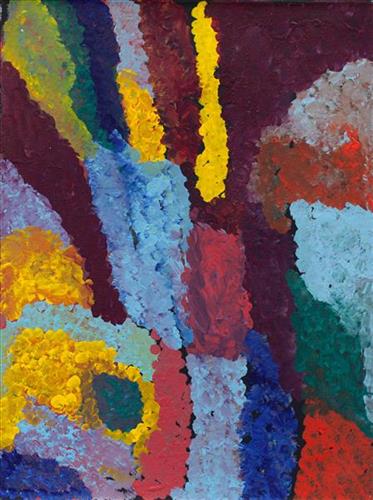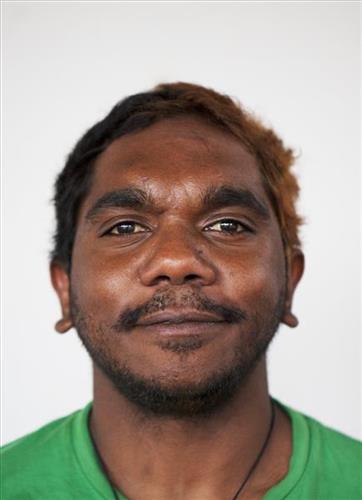111581988830
Untitled
Ignatius Taylor, known to many as Hamzah, is part of the youngest generation of Martumili Artists. He, like his contemporaries, began to paint with his parents, grandparents and extended family, thus fostering an organic process of learning, not only about painting techniques, but also specific locations, family histories, traditional ways of life, and Jukurrpa (Dreaming). In this way, cultural knowledge continues to be transferred through visual arts, keeping Martu culture strong.
Hamzah’s subject matter is strongly informed by the Jukurrpa (Dreaming) narratives and knowledge of his traditional ngurra (home Country, camp) that he has been learning from his elders since early childhood. Hamzah’s ngurra encompasses the Karlamilyi (Rudall River) region, Warnman Country located in the very heart of the Martu homelands. The region is situated southwest of the Great Sandy Desert and northeast of the Little Sandy Desert. Spanning through the region is the epic Karlamilyi River, which runs north into Nyayartakujarra (Ngayarta Kujarra, Lake Dora), a large salt lake. According to two of the central Martu Jukurrpa narratives, the Karlamilyi River and its surrounds were created by the ancestral beings Jila Kujarra (Two Snakes) and the Wati Kujarra (Two Goanna Men) as they travelled across the lands. Hamzah’s paintings most frequently depict the Jila Kujarra in their journey across the land as they are pursued by the Niminjarra, spiritual ancestors of the Warnman people.
Stylistically Hamzah’s work melds traditional and contemporary elements, demonstrating the development of his own aesthetic, while continuing to reflect the powerful influence of his elders. Realist imagery alternates with aerial depictions of Country; dotted paint applied in modern palettes depicting walka (designs), iconographic forms universally shared across the Western Desert. For many thousands of years these designs have represented men and women, kapi (water sources), tali (sandhills), different varieties of warta (trees, vegetation), ngarrini (camps), jina (tracks), jila (snakes), and Jukurrpa ancestral beings.




